Larynx and Phonation Flashcards
1/19
Earn XP
Description and Tags
Flashcards about the larynx and phonation based on lecture notes.
Name | Mastery | Learn | Test | Matching | Spaced |
|---|
No study sessions yet.
20 Terms
Cricothyroid membrane/ligament
A membrane that stretches from the cricoid cartilage to the vocal process of the arytenoid and the thyroid cartilage; its free edge is thickened and forms the vocal ligaments, creating the true vocal cords.
Quadrangular membrane
A membrane attached along the lateral margin of the epiglottis down to the thyroid cartilage anteriorly and the arytenoid cartilages posteriorly; its free edge inferiorly is thickened and forms the vestibular ligament.
Vestibular ligament
Formed by the thickened free edge of the quadrangular membrane.
Vestibular ligaments
Also known as false vocal folds/cords, they sit superior to the cricothyroid ligament.
Vocal ligaments
Part of the true vocal folds/cords, responsible for producing sound, and lie inferiorly and more medially compared to the quadrangular membranes.
Vocal folds/cords
The vocal ligaments plus overlying soft tissue (mucosa).
Abduction (vocal folds)
Movement of the vocal folds away from the midline.
Adduction (vocal folds)
Movement of the vocal folds toward the midline.
Six Intrinsic muscles of the larynx
Cricothyroid, Thyroarytenoids, Posterior cricoarytenoid, Lateral cricoarytenoid, Transverse arytenoid, Oblique arytenoid
Look at this diagram of the cricothyroid ligament

Look at this diagram of the quadrangular membrane
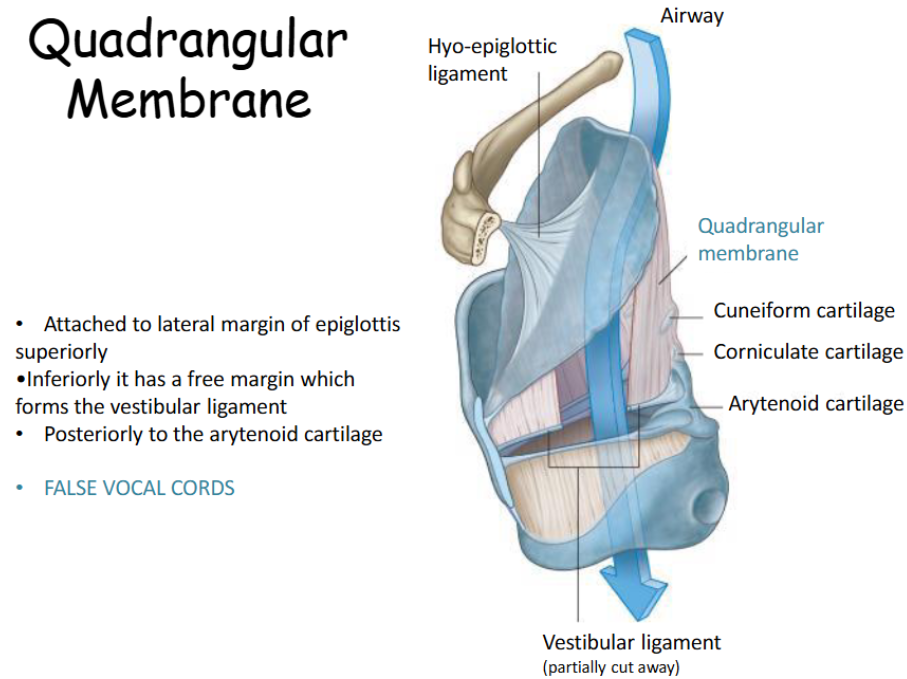
What does the quadrangular membrane
Forms false vocal cords
What makes the cricothyroid membrane/ ligament?
The vocal ligaments are in fact the folded upper edge of a membrane that stretches from the cricoid cartilage to the vocal process of the arytenoid and the thyroid cartilage. This is the cricothyroid membrane/ ligament. The free edge of this membrane is thickened and folded for support and forms the vocal ligaments.
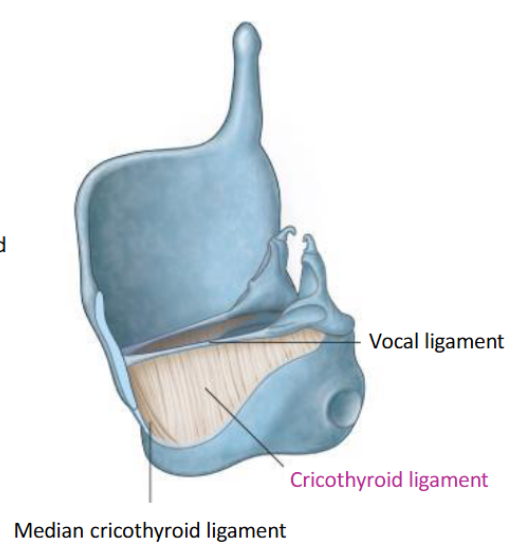
Where does the quadrangular membrane attach?
The quadrangular membrane attached along the lateral margin of the epiglottis down to the thyroid cartilage anteriorly and the arytenoid cartilages posteriorly. It has a free edge inferiorly which is thickened and forms the vestibular ligament
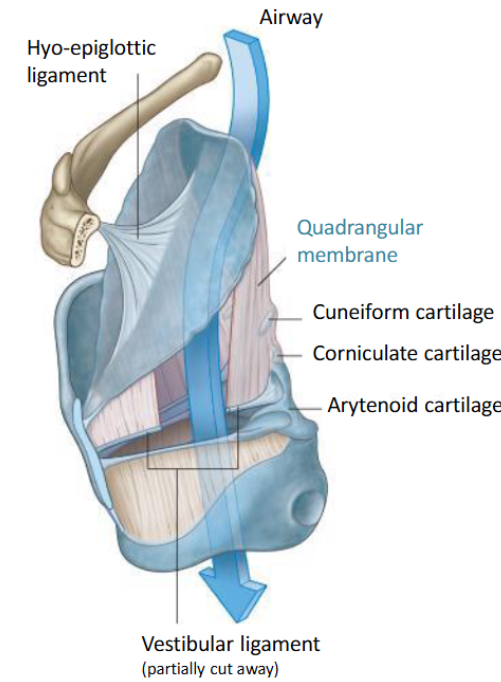
What are the vestibular ligaments also called and where do they lie?
The vestibular ligaments are sometimes referred to as the false vocal folds /cords. These lie superior to the criicothyroid ligament.
The vocal ligaments are a part of the true vocal folds / cords and are
responsible for producing sound. These lie inferiorly and more medially compared to the quadrangular membranes
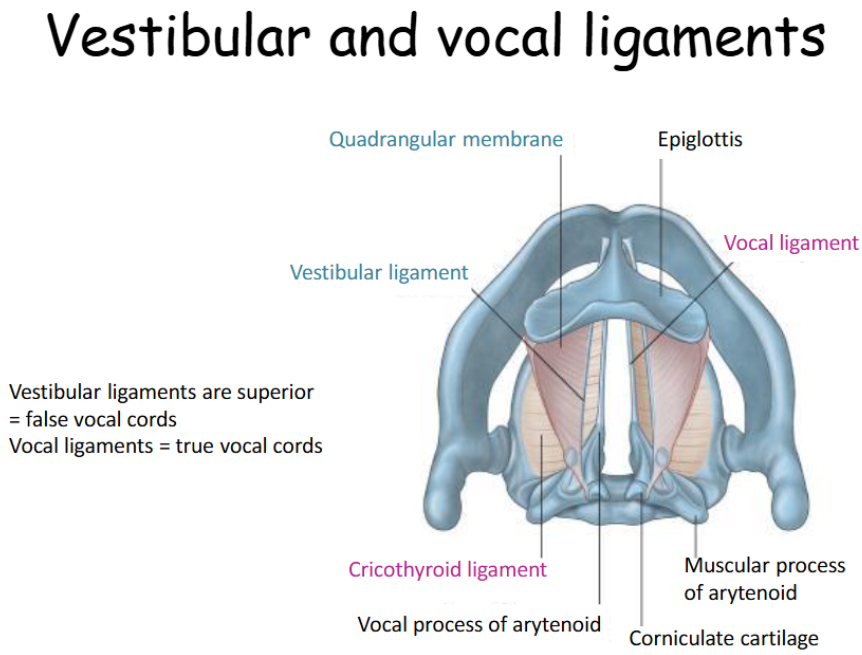
Look at this diagram of the full framework of the larynx (including the mucosal lining)
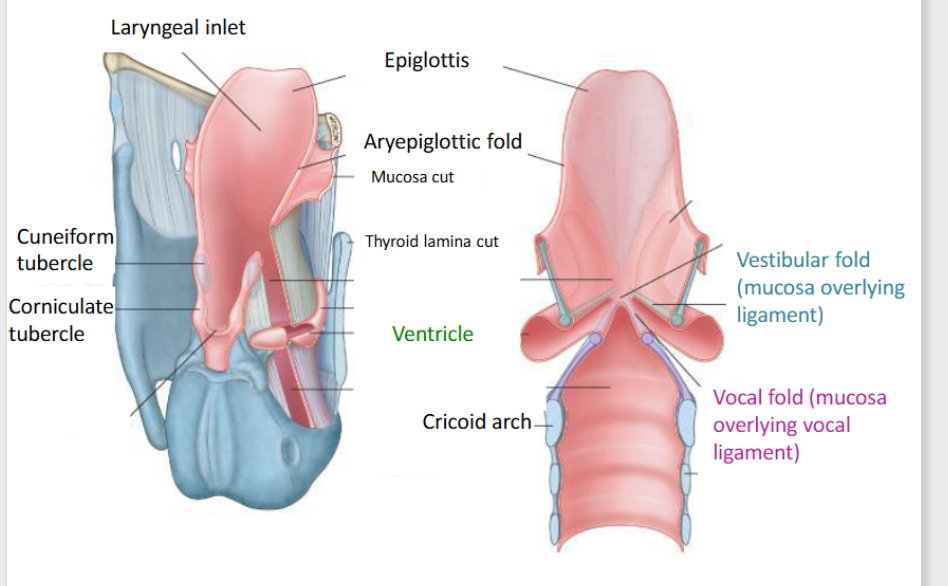
Where are the vocal folds formed?
The vocal folds or chords are actually formed by the vocal ligaments plus overlying soft tissue (mucosa). I.e. the vocal ligaments lie within the vocal folds/cords. The overlying soft tissue produces mucous to help moisten air which enters the respiratory system - this helps to warm the air and aids diffusion of oxygen into the lungs.
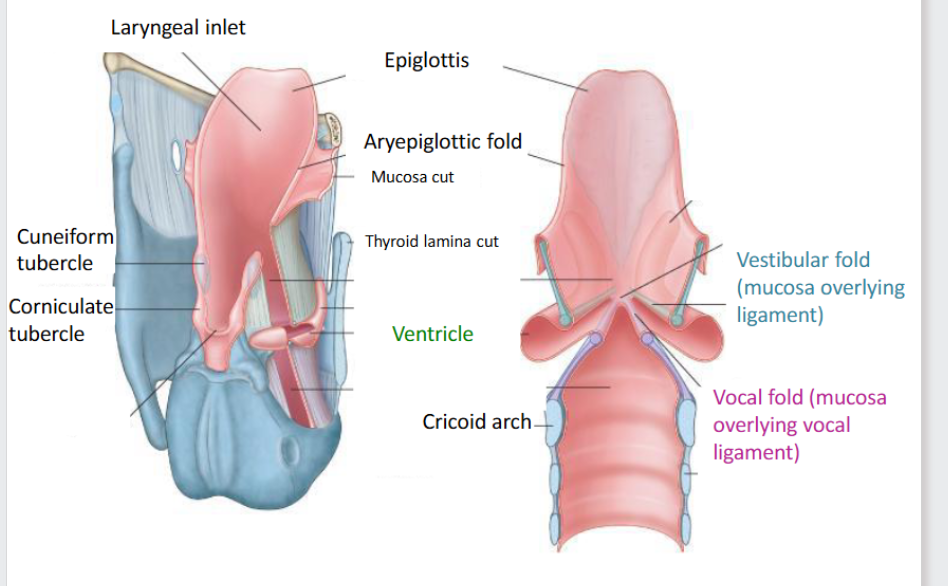
Look at this diagram of the Vestibular and vocal ligaments
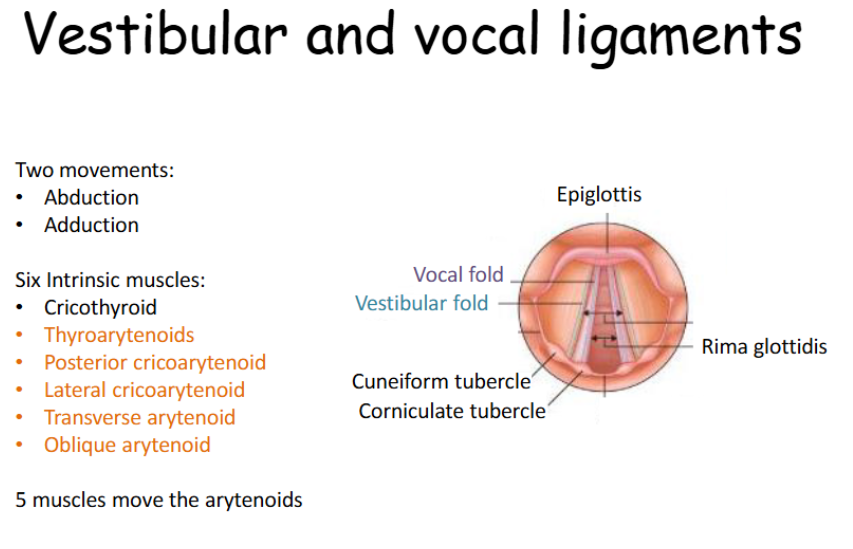
What are the 2 movements of the Vestibular and vocal ligaments
Abduction and adduction
What are the 6 intrinsic muscles?
• Cricothyroid
• Thyroarytenoids
• Posterior cricoarytenoid
• Lateral cricoarytenoid
• Transverse arytenoid
• Oblique arytenoid